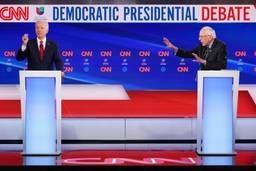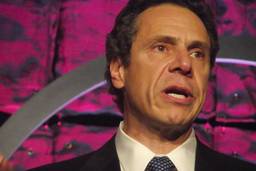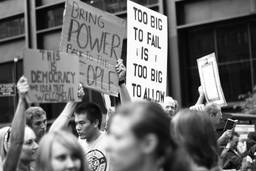Why Year One Matters
Don’t listen to apologists who say Obama’s first year in office is not important, and who insist Americans must be patient for change.
David Sirota

When the New York Times’ John Harwood recently reported that a top Obama adviser told him that progressives “need to take off the pajamas, get dressed and realize that governing a closely divided country is complicated and difficult,” it was a rejoinder that expressed far more than Establishment disdain for grassroots pressure and activism. It represented a deeper assertion, pervasive in political circles, that says citizens of all ideological stripes must be patient with an Obama White House that has only been in office for a year.
This is a message that will fill airwaves, magazine covers and newspaper pages when our nation takes stock of 2009. More than anything, we will be told that a first-term president’s inaugural year means nothing – and that to expect anything more than nothing is unrealistic. Indeed, the White House’s refrain that “governing a closely divided country is complicated and difficult” is a euphemism for “stop pushing so hard,” “don’t expect so much change so quickly,” “we can’t try to do too much too fast” and every other dollop of hackneyed conventional wisdom.
In one sense, there’s nothing surprising about this coming from Washington. Beltway journalists, pundits and politicians are inclined to despise anything even vaguely grassroots in nature, because anything grassroots in nature fundamentally challenges their institutional authority and power. But in another sense, it’s shocking that the same Beltway culture that so consistently venerates the political vehemence, aggressiveness and legacy of Ronald Reagan would manufacture a conventional wisdom insisting that the first year of a president’s first term is the time for patience.
Recall this passage from McGill University historian Gil Troy’s Reagan biography, Morning in America, that explains how most of the major legislative initiatives that have come to be called the Reagan Revolution happened in 1981:
That summer of 1981, Reaganism peaked. The Reagan legislative steamroller continued to flatten the Democratic opposition in the Congress with the passage of Kemp-Roth tax cuts on the heels of the Stockman-Weinberger mix of social program cuts and defense increases … [Reagan] had solidified his image as a no-nonsense leader determined to repudiate his predecessors’ weaknesses …
By September, however, the Democrats counterattacked…his rivals blamed him for the growing recession. Much of the next seven and a quarter years would be spent scrambling on the scrimmage line Reagan and his men had initially reached with breakneck speed. If the first half-year of the Reagan era could be considered to be a conservative blitzkrieg, politically the next seven and a half years became trench warfare. Reagan failed to advance his revolution much further… From refreshing, cleansing, sometimes inspiring, sometimes terrifying promises of revolution in 1981 would emerge a frustrating, polarizing, enervating legislative gridlock.
For reference, Reagan was elected in 1980 by a smaller percentage than Barack Obama was elected in 2008, and therefore Reagan had a much smaller legislative mandate than Obama. Additionally, while Obama came into office with polls giving him high marks and voters giving him huge majorities in both houses of Congress, Reagan came to Washington with polls showing him one of the most unpopular presidents entering office, with Republicans controlling only one house of Congress (the Senate), and only by a very narrow majority (53 votes).
The dichotomy is obvious: The Reagan administration, facing huge political obstacles, powered through the bulk of the Reagan Revolution’s legislative agenda in his first year in office. The Obama administration, with far fewer political obstacles, has spent the first year slow-walking priorities like Wall Street reform and climate change; watering down healthcare reform; supporting the extension of controversial Bush administration policies like the USA PATRIOT Act; quietly avoiding any leadership role on social issues like gay marriage and abortion; and escalating the war in Afghanistan. As comedian Jimmy Fallon joked, “Obama says it’s all part of his plan to finally deliver on the campaign promises made by John McCain.”
The Obama White House has responded by telling Americans to sit tight – a “patience first” posture that is particularly odd coming from Obama. After all, he was the guy who, in January of 2008, said that he more than any other presidential candidate would emulate Reagan’s aggressiveness.
“Ronald Reagan changed the trajectory of America in a way that Richard Nixon did not, and a way that Bill Clinton did not,” Obama told the Reno Gazette-Journal’s editorial board, adding that he wants “a return to that sense of dynamism.”
To be sure, Reagan was pushing an agenda backed by Big Money, and Obama promised to push an agenda that would challenge Big Money – so the former’s charge was easier than the latter’s. Additionally, compared to the Bush era, Obama’s success kickstarting a national discussion about some of the biggest issues represents genuine progress. Indeed, considering the scope of the promises Obama made and the size of the problems he pledged to confront, it’s no small first-year accomplishment to have vigorous debates about such intractable challenges as healthcare, global warming and structural economic reform.
And that gets back to the key point: As voters take stock of their president’s first year, they will inevitably hear a cacophony of reporters and administration officials berate that very metric of evaluation, insisting the one-year mark means nothing – when in fact it often means everything.
It is not just Reagan who made his mark at the beginning of his term. FDR, unlike Obama, began his first year in office, 1933, by reforming the financial system and pouring money into the economy via public works relief programs like Civilian Conservation Corps. That early action positioned the Democrats to win big in 1934, ushering in the most radical Congress in American history. Similarly, George W. Bush, in a gift to the rich, pushed through the largest tax cut in U.S. history in 2001, setting the direction of economic policy for the next seven years – or, one could argue due to the failure of Obama and the Democratic Congress to rescind those cuts, the next nine.
Presidents are most politically powerful in their first year. They have election mandates behind them (well, maybe not Bush) and they have the chance to change the paradigms of their predecessors. The longer they wait, the more the opposition is emboldened and the harder it is to pass anything.
Therein lies the lesson: History has shown that the longer delay is tolerated, justified or rationalized in the early days of a presidency, the less likely the rhetoric of “hope” becomes the legislation of change.
David Sirota is an award-winning investigative journalist and an In These Times senior editor. He served as speechwriter for Bernie Sanders’ 2020 campaign. Follow him on Twitter @davidsirota.









